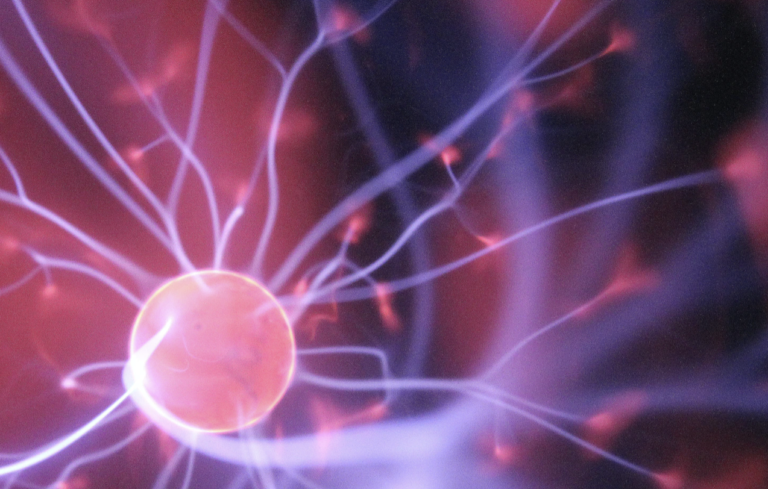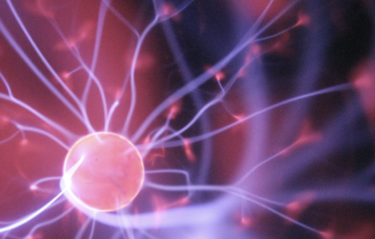はじめに
TED-Ed動画を眺めているとどうしても脳の仕組み関係が身に付く。昨年度の「脳型情報処理機械論」については、頑張って投稿を続けたおかげで担当教授からも優の評価を頂けた。嬉しい。4月からは2科目を履修予定だ。こちらも頑張ろう。今日選んだ動画は次のものだ。興味を持っていただける人はぜひトライして見てほしい。
(出典:YouTube)
網状組織説とニューロン説
脳が電気信号によって身体を制御していることは1860年代当時にも知られていたが、どのように伝達されるかについて活発な議論がなされた。当初指示されたのが、網状組織説(reticular theory)であり、これはドイツのエアランゲン大学の解剖学教授ヨーゼフ・フォン・ゲルラッハ(1820年4月3日から1896年12月17日)だ。ゲルラッハは組織学的染色と解剖学的顕微鏡写真のパイオニアであり、1858年に組織学的染色剤としてゼラチンと混合したカーマインを導入した。この概念をノーベル賞受賞者のイタリア人医師カミロ・ゴルジが普及させた概念である。一方のニューロン説は、スペインの病理学者サンティアゴ・ラモン・イ・カハルはゴルジが発見した染色法を用いて観察した結果、神経組織も他の組織とバラバラの細胞でできていることを究明し、ニューロン説を提唱した。興味深いことに、この対立する2つの理論の提唱者2名は1906年に「神経系の構造」に関する業績が認められて、ノーベル生理学・医学賞を共同受賞している。
カミッロ・ゴルジ
網状組織説を支持したカミッロ・ゴルジ(Camillo Golgi、1843年7月7日から1926年1月21日)は、イタリアのコルテノ・ゴル時にまれ、パヴィア大学で医学を学びジュリオ・ビッツォゼーロの元で研究を行い1865年に卒業した。卒業後は、精神病院に勤務している際に、ランダムに一部の細胞のみを染色するという神経組織の染色方法を発見し、これにより初めて脳の中の神経の経路を確認することが出来た。彼はこの染色を「黒い反応(black reaction)」と呼んだが、後にゴルジ染色(Golgi’s Method)と呼ぶようになった。この染色は硝酸銀を重クロム酸カリウム(potassium bichromate)と反応させることで、クロム酸銀の粒子を神経鞘に固定させる。細胞が完全な黒に染色されるので、黄色の背景と比べて鮮明でコントラストがよい染色となる。ただ、神経細胞を視覚化することが可能となった結果、ゴルジが提唱する網状組織説が否定され、サンティアゴ・ラモン・イ・カハールが提唱するニューロン説が受け入れられるようになった。
サンティアゴ・ラモン・イ・カハル
ニューロン説を支持したサンティアゴ・ラモン・イ・カハル(sanˈtjaˈ mon i kaˈ; 1852年5月1日から1934年10月17日)はスペインの神経科学者、病理学者、組織学者で、神経解剖と中枢神経系に特化した学者だ。ラモン・イ・カハルは、スペイン出身者として初めて科学分野のノーベル賞を受賞している。脳の微視的構造に関する独創的な研究により、近代神経科学の先駆者となった。脳細胞の樹状突起を描いた数百枚の絵は、20世紀半ばから現在に至るまで、教育やトレーニングのために使用されている。ラモン・イ・カハルは、軸索成長円錐を発見した。また、神経細胞間の関係は、当時存在していた網状組織説のように連続的あるいは単一システムではないことを証明した。彼は、ニューロンとニューロンの間には隙間があることを発見した。のちにハインリッヒ・ワルダイエが「ニューロン理論」と呼ぶことになる決定的な証拠である。1894年にロンドン王立協会で「成人のニューロンが成長する能力と新しい結合を作り出す力は、学習を説明できる」と述べたため、彼を最初の「神経科学者」と見なす人々もいる。彼は、シナプス前細胞からの接触部位としては認めていなかったが、樹状突起スパインの存在を提唱していた。彼の弟子であるラファエル・ロレンテ・デ・ノーは、この入出力システムの研究をケーブル理論や神経構造の初期の回路分析へと継続・拡張した。
7つの質問
動画を見終わると7つの質問があった。
Q1) What is reticular theory?
reticular theoryとは何か。最初は全く分からなかった。後で調べると、単一の信号細胞が体の隅々までまで繋がっていて、これを介して伝達される網状組織論だったので、「Nervous system is made up of a single structure」が正解だろう。
Q2) Which of the following is NOT a reason why brain tissue was hard for scientists to study?
科学者が脳組織を研究しにくかった理由として、次のうち誤っているものはどれかという説もんだ。選択肢には、脳組織の入手が困難であること、脳組織は非常に柔らかいこと、脳組織には細胞がぎっしり詰まっていること、脳組織は非常にデリケートことだ。正直ミスったけど、正解は「入手困難(Brain tissue is hard to get)」が正解だった。確かに繰り返して聞くと他の3つは言及していた。
Q3) What technique did scientists invent to help see cells under the microscope?
顕微鏡で細胞を見るために、科学者が発明した技術は何かという設問だった。これは、黒い反応と呼ばれるような、コントラストをつけるための染色なので、「Stains that created contrast」が正解だ。
Q4) What did Cajal find when he used an improve stain on brain tissue?
カハルが脳組織の改良染色を行ったところ何が分かったかという設問だ。カハルは神経細胞を丹念に調べて、細胞と細胞は繋がっていないこと、細胞と細胞の間に分泌される化学物質を介して信号が伝達されていたので、「The brain was made up of single cells not physically connected to one another」が正解だ。よく考えるとこれは非常に良くできている仕組みだし、レジリアントとタフだ。
Q5) How did Cajal use his art to inform his discovery?
カハルは、自分の発見に芸術をどのように生かしたかと言う設問だ。カハルは、デッサンを繰り返し、細胞は物理的につながっておらず、電気的に連絡を取り合っているという結論に至ったので、英語なら次のような感じか。
Q6) How else do you think art has inspired scientific discoveries?
芸術は他にどのような形で科学的発見にインスピレーションを与えてきたかと言う設問だ。科学的な発見は、論理だけでなく、イメージによっても導かれる。アートはイメージを作ることが重要なので、英語では次のような感じか。
Q7) Do you think creativity is an important part of scientific discoveries? Why or why not?
創造性は科学の発見に重要な役割を果たすか、その理由は何かという設問だ。これの答えは、間違いなくイエスである。科学的発見の最も重要な部分は、想像力によって生み出されると思うからだ。英語なら次のような感じだろうか。
まとめ
今回の動画はまず、「reticular theory」が理解できなかった。単語の意味と言うよりも、それが意味することが全く理解できなかった。その後、いろいろ調べて、日本語で言う網状組織説とニューロン説が対立していたことなどを理解した。やはり英語のリスニングは、英語力だけではなく、そのトピックに対する知識や深い理解があるのかどうかで大きく異なることを再認識した。
以上
最後まで読んで頂きありがとうございました。
拝
参考:英文スクリプト
In the late 1860s, scientists believed they were on the verge of uncovering the brain’s biggest secret. They already knew the brain controlled the body through electrical impulses. The question was, how did these signals travel through the body without changing or degrading? It seemed that perfectly transmitting these impulses would require them to travel uninterrupted along with some kind of tissue. This idea, called reticular theory(網状組織説), imagined the nervous system as a massive web of tissue that physically connected every nerve cell in the body.
Reticular theory captivated the field with its elegant simplicity. But soon, a young artist would cut through this conjecture, and sketch a bold new vision of how our brains work. 60 years before the reticular theory was born, developments in microscope technology revealed cells to be the building blocks of organic tissue. This finding was revolutionary, but early microscopes struggled to provide additional details. The technology was especially challenging for researchers studying the brain. Soft nervous tissue was delicate and difficult to work with. And even when researchers were able to get it under the microscope, the tissue was so densely packed it was impossible to see much. To improve their view, scientists began experimenting with special staining techniques designed to provide clarity through contrast.
The most effective came courtesy of Camillo Golgi in 1873. First, Golgi hardened the brain tissue with potassium bichromate to prevent cells from deforming during handling. Then he doused the tissue in silver nitrate, which visibly accumulated in nerve cells. Known as the “black reaction”, Golgi’s Method finally allowed researchers to see the entire cell body of what would later be named the neuron. The stain even highlighted the fibrous branches that shot off from the cell in different directions. Images of these branches became hazy at the ends, making it difficult to determine exactly how they fit into the larger network. But Golgi concluded that these branches connected, forming a web of tissue comprising the entire nervous system 14 years later, a young scientist and aspiring artist named Santiago Ramon y Cajal began to build on Gogi’s work. While writing a book about microscopic imagin, he came across a picture of a cell treated with Golgi’s stain.
Cajal was in awe of its exquisite detail – both as a scientist and an artist. He soon set out to improve Golgi’s stain even further and create more detailed references for his artwork. By staining the tissue twice in a specific time frame, Cajal found he could stain a greater number of neurons with better resolution. And what these new slides revealed would upend reticular theory – the branches reaching out from each nerve cell were not physically connected to any other tissue. So how were these individual cells transmitting electrical signals? By studying and sketching them countless times, Cajal developed a bold, new hypothesis. Instead of electrical signals traveling uninterrupted across a network of fibers, he proposed that signals were somehow jumping from cell to cell in a linear chain of activation.
The idea that electrical signals could travel this way was completely unheard of when Cajal proposed it in 1889. However, his massive collection of drawings supported his hypothesis from every angle. And in the mid-1900s, electron microscopy further supported this idea by revealing a membrane around each nerve cell keeping it separate from its neighbors. This formed the basis of the “neuron doctrine”, which proposed the brain’s tissue was made up of many discrete cells, instead of one connected tissue. The neuron doctrine laid the foundation for modern neuroscience and allowed later researchers to discover that electrical impulses are constantly converted between chemical and electrical signals as they travel from neuron to neuron. Both Golgi and Cajal received the Nobel Prize for their separate but shared discoveries, and researchers still apply their theories and methods today. In this way, their legacies remain connected as discrete elements in a vast network of knowledge.




